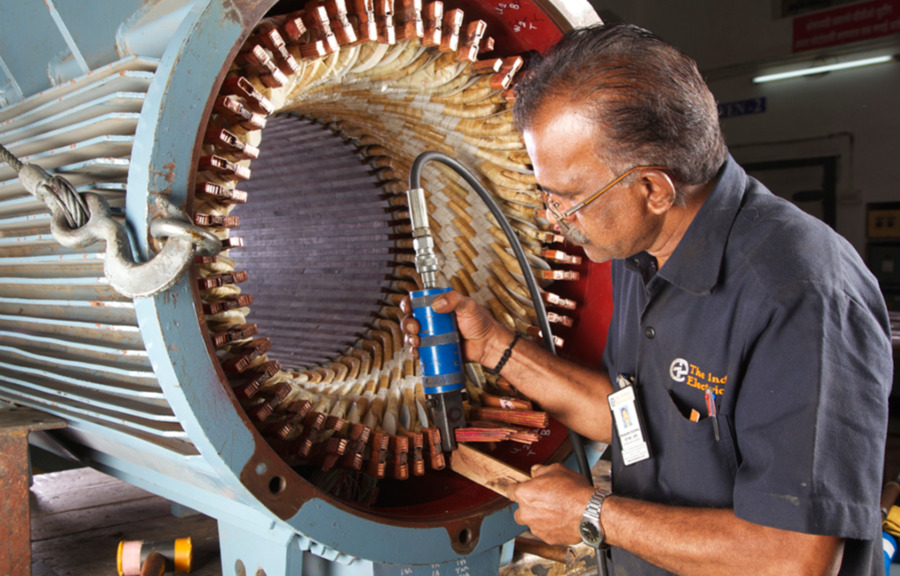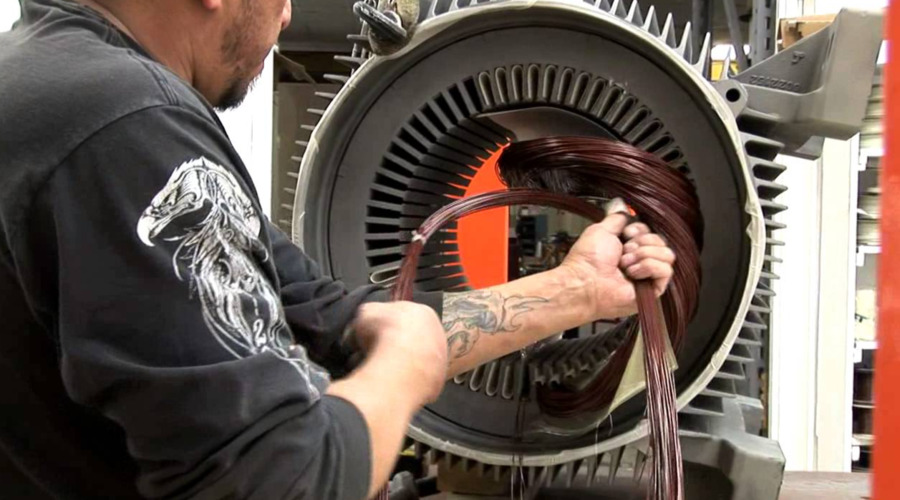Electric motors, including DC motors, are integral to the infrastructure of various industries, where their efficiency directly affects operational expenses. Over their lifespan, electric motors may experience degradation that can lead to diminished efficiency and increased power usage. One effective method to combat this decline is through electric motor rewinding, specifically addressing both AC and DC motor rewinding.
Understanding Electric Motor Rewinding
Electric motor rewinding entails the refurbishment of a motor by replacing outdated or damaged components, such as winding wires, bearings, and shafts. The primary aim is to bring the motor back to its original or even superior operational standard.
Key Benefits of Electric Motor Rewinding
Enhanced Energy Efficiency:
- Minimization of Electrical Losses: The rewinding process often includes the installation of new winding wires with improved insulation properties, reducing leakage and thereby enhancing electrical efficiency.
- Cooling System Optimization: Proper cooling is essential to prevent motor overheating and subsequent energy wastage. Rewinding allows for the redesign of cooling systems to optimize airflow and heat dissipation.
- Magnetic Flux Density Adjustment: By recalibrating the magnetic field within the motor, rewinding helps in achieving optimal operational efficiency, which can significantly reduce electricity consumption.
Choice of Winding Material: Using superior winding materials, such as copper, which excels in conductivity and heat management, can further boost the motor’s efficiency.

Consequences of Neglecting Electric Motor Rewinding
When electric motor rewinding is not performed on a motor that requires it, several detrimental effects can arise, impacting both the performance and longevity of the motor:
- Increased Energy Consumption: Motors that operate with compromised components tend to draw more power to achieve the same level of performance. This inefficiency leads to higher operating costs and increased energy usage.
- Reduced Motor Life: Without intervention, the wear and tear on a motor’s internal components can accelerate, leading to irreversible damage and potentially catastrophic motor failure.
- Operational Downtime: As motor efficiency declines, the risk of unplanned downtimes increases. This can disrupt operations, requiring emergency repairs that are often more costly and time-consuming than scheduled rewinding.
- Safety Risks: Deteriorating motor conditions can pose safety hazards, such as electrical fires or failures in critical applications, endangering personnel and facilities.
Additional Advantages of Rewinding
Beyond improving energy efficiency, rewinding can prolong the motor’s lifespan, thereby decreasing the frequency and costs associated with downtimes. It is also an environmentally friendly practice as it reduces the need to dispose of non-functional motors.

Considerations for Rewinding
Not all motors are suitable for rewinding, particularly those that are extensively damaged or obsolete. Therefore, selecting a reputable and experienced electrical engineering firm to perform the rewinding is crucial to ensure that it adheres to high standards and restores the motor effectively.
Conclusion
Electric motor rewinding stands out as a strategic approach to enhance energy efficiency in industries reliant on these machines. It supports not only cost reduction and increased sustainability but also promotes longer operational lifespans of motors. Businesses looking to maintain their electric motors in peak condition should consider rewinding as a part of their maintenance strategy.
Electric motor rewinding by Ghaima Group represents a smart investment for any business focused on sustainability and efficiency. It is essential, however, to work with skilled professionals to ensure that the process is done correctly and to the highest standards.

Football fan, follower of Christ, audiophile, reclaimed wood collector and recent OCAD grad. Acting at the nexus of design and sustainability to craft experiences both online and in real life.
